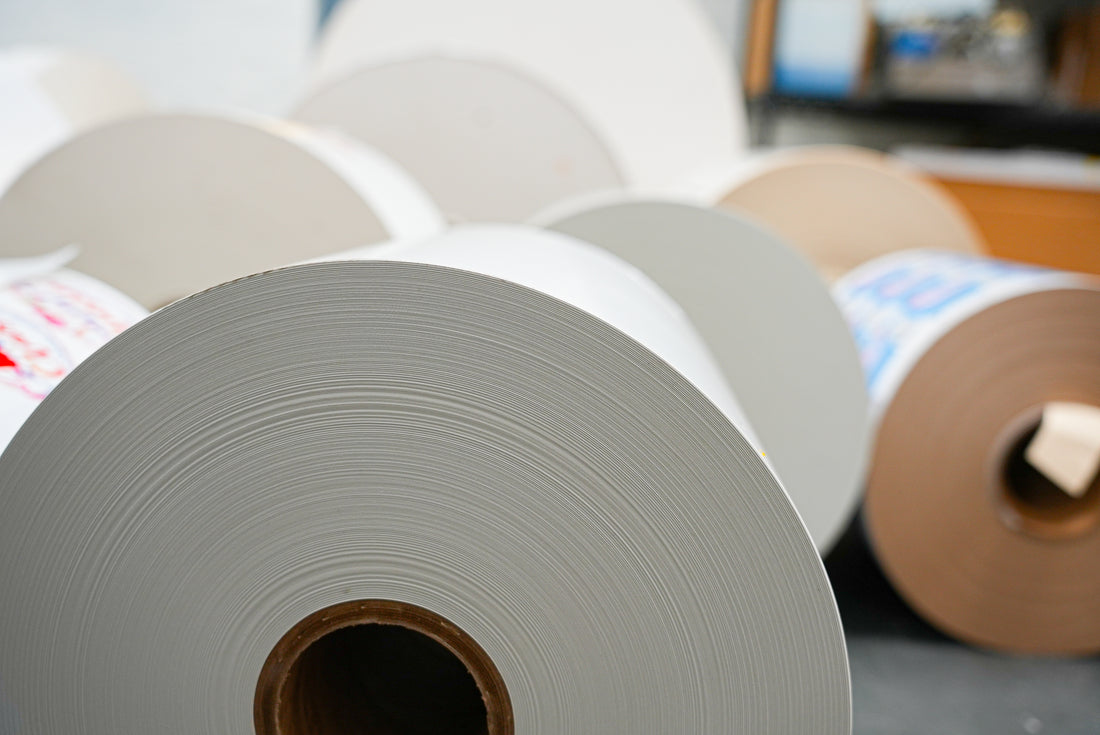The visual presence of any product is what will likely attract potential buyers and entice them to try it out and in the process develop loyalty. It is what makes them gravitate towards the same products time after time thus ensuring steady gains for manufacturers. It is therefore paramount that you get everything about your product labeling right, particularly the material and design. Understanding the differences between cut-and-stack labels and roll labels will enable you make the best choice in this regard and enjoy the success that comes with it.
Cut-and-Stack Labels
Simply put, these are labels that are printed in bulk on large sheets, cut, and stacked. The gluing process is mostly handled at the packaging stage. For instance, in the case of postage stamps or envelopes, licking activates the glue and makes it possible to stick on the desired surface. In a majority of cases, the labels are overlapped end to end so that the label is wrapped all around the product and glued to itself.
Pros of Cut-and-Stack Labels
- This type of labeling is ideal when large volumes are required as the method is extremely cost-effective.
- They offer great flexibility in choice of material from holographic or metallized paper, to synthetic film both opaque and see-through clear labels.
- They can be printed in full color to make highly attractive stickers and promotional labels.
- They have minimal wastage and are therefore considered a highly eco-friendly choice.
- They are known to withstand extreme conditions and hazards and are therefore an ideal choice for food and beverage products as well as household products that require a lot of handling.
- They are easy to customize and hence can be used on virtually any type of surface regardless of texture or shape.
Cons of Cut-and-Stack Labels
- The slightest error in the gluing process could mean dog-eared labels for your products.
Roll Labels
Unlike cut-and-stack labels which are printed out on sheets and cut according to size and shape, roll labels are printed on a roll that is spun around a spool using thermal transfer technology. The labels are printed out one at a time and it is therefore a preferred method when the content or message differs from one label to another.
Pros of Roll Labels- Use of thermal transfer to print as opposed to inkjet or laser technology is highly economical.
- It offers a pocket-friendly option for printing out labels that are not identical like barcodes or name tags.
- The labels are highly durable and can even withstand exposure to harsh chemicals.
- They do not smudge or smear because they do not use ink making them resistant to damage.
- In most cases, the technology used is only applicable for black and white labels not full color unless one has invested in an inkjet roll printer.
Every product label is distinct and therefore calls for a unique set of requirements. As such, proper labeling calls for a thorough analysis of these requirements vis-à-vis the different labeling options available in the market. Partnering with an expert firm in the field ensures that you make the best and most economically viable choice to guarantee marketing success and long-term customer loyalty.

